★½
“In space, no-one can hear you snore…”
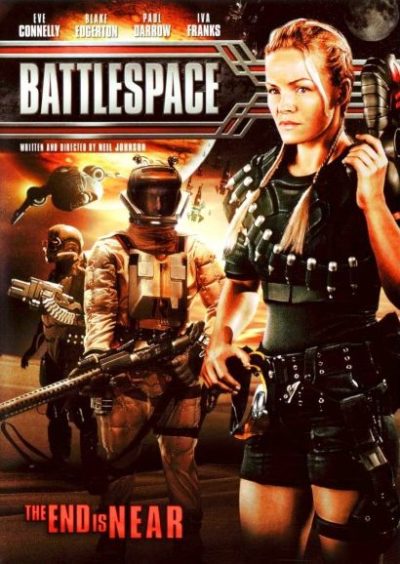 This dates back to 2006, and was somewhat groundbreaking at the time, due to the very high volume of digital effects and CGI background work – it came out was three years before Avatar, as a yardstick. The key word here, however, is “volume”. For the effects make up for in quantity what they largely lack in quality, although you have to be impressed at the sheer ambition on view, especially when you don’t have a fraction of the resources which were available to James Cameron. More problematically, also missing is the skill necessary to handle a narrative, where there is simultaneously too much and not enough going on. The former is apparent in entire universe building which has to be accomplished in hard to digest expository chunks, and the latter makes itself known, courtesy of long stretches which are as devoid of interesting features as the Arizona landscapes in which they were shot.
This dates back to 2006, and was somewhat groundbreaking at the time, due to the very high volume of digital effects and CGI background work – it came out was three years before Avatar, as a yardstick. The key word here, however, is “volume”. For the effects make up for in quantity what they largely lack in quality, although you have to be impressed at the sheer ambition on view, especially when you don’t have a fraction of the resources which were available to James Cameron. More problematically, also missing is the skill necessary to handle a narrative, where there is simultaneously too much and not enough going on. The former is apparent in entire universe building which has to be accomplished in hard to digest expository chunks, and the latter makes itself known, courtesy of long stretches which are as devoid of interesting features as the Arizona landscapes in which they were shot.
I could spend a thousand words or more laying out the background here. Except, why bother, because it’s virtually irrelevant to what follows: it says a lot when a film is apparently so bored by its own mythology, it all but abandons it. There are instead, two basic chunks, with the first told mostly in voice-over flashback, Iva T. Stryyke recounting an adventure experienced by her mother, Colonel Mara Shrykke (both generations played by Connelly), centuries before, when she was trying to stop a weapon of mass destruction being readied for use in an ongoing inter-stellar conflict. At least, I think that’s what was going on. My will to live had largely been sucked out, by the endless scenes of her roaming a desert, followed by an enemy agent. It appears those were shot here in Arizona: I never knew we were located in America’s most boring state.
This fondness for using a gravel pit as a stand-in for an alien landscape will be recognized by anyone familiar with Doctor Who, and the second part of the story feels like it might have fitted in there too. Eventually, the daughter is stuck on a spaceship at the end of the universe – as in, its actual heat death. She’s the only thing standing between it, and a new Big Bang, which will start the cycle over again. Only, she has qualms about going into the void. It’s a very Whovian concept, and the debt clearly owed to BBC science-fiction extends to the voice of her computer, played by Paul Darrow, who was one of the stars in the iconic series, Blake’s 7. This is… not so iconic, though in Connelly’s defense, she does a half-decent job of looking the part (or parts), and there’s only so much anyone can do with lines like, “Never mess with a thirty-third century girl.” As a technical exercise, this has its moments, considering the era from which it dates. In virtually every other way, however, it’s a poor substitute for even eighties television.
Dir: Neil Johnson
Star: Eve Connelly, Blake Edgerton, Paul Darrow, Iva Franks Singer





 The Hyde Project was a secret government experiment to create artificially-enhanced super-soldiers. Due to difficulty controlling their aggressive tendencies, it shut up shop, but not before 13 of them escaped. They are now being hunted down by a pair of MI-6 agents, Damion Crow (Kyle Hotz) and Lina Petrov (Jensen). Connected to this, somehow, is Iris Black (Newberry). She’s a put-upon barista, with a cheating boyfriend, sleazy boss, alleged stalker – and an increasing body-count of the people around her, the corpses being tagged with religious symbols, in line with the work of an active serial killer. This quickly brings her to the attention of the FBI, in particular Agent Fry (Osborne) and her partner, who have been hunting the killer. They’re not exactly prepared for what they will discover.
The Hyde Project was a secret government experiment to create artificially-enhanced super-soldiers. Due to difficulty controlling their aggressive tendencies, it shut up shop, but not before 13 of them escaped. They are now being hunted down by a pair of MI-6 agents, Damion Crow (Kyle Hotz) and Lina Petrov (Jensen). Connected to this, somehow, is Iris Black (Newberry). She’s a put-upon barista, with a cheating boyfriend, sleazy boss, alleged stalker – and an increasing body-count of the people around her, the corpses being tagged with religious symbols, in line with the work of an active serial killer. This quickly brings her to the attention of the FBI, in particular Agent Fry (Osborne) and her partner, who have been hunting the killer. They’re not exactly prepared for what they will discover.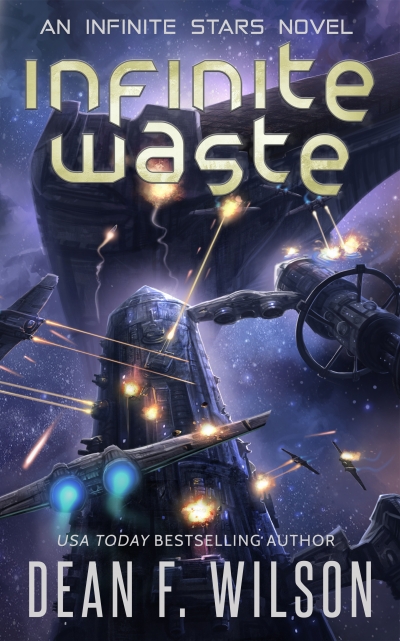 This initially seemed like a borderline entry, which I kept reading purely for entertainment. It’s about an exploratory star-ship, the Gemini, out on the very edge of known space, which comes across a giant barge, packed with nuclear waste and populated by a race of rat-humanoids, the Raetuumak. The Gemini is an appropriate name for the craft, as it’s effectively two separate ships, each with their own captain and very different approaches. Maggie Antwa, commander of Gemini Right, is a cautious scientist who abhors violence in any form, and was compelled to take on this mission after being involved in a environmentalist rebellion against the ruling Empire. Over in Gemini Left, on the other hand, Skip Sutridge is a square-jawed believer in shooting first and asking questions… well, never, to be honest. He has been sent to the fringes, probably to try and keep him out of trouble.
This initially seemed like a borderline entry, which I kept reading purely for entertainment. It’s about an exploratory star-ship, the Gemini, out on the very edge of known space, which comes across a giant barge, packed with nuclear waste and populated by a race of rat-humanoids, the Raetuumak. The Gemini is an appropriate name for the craft, as it’s effectively two separate ships, each with their own captain and very different approaches. Maggie Antwa, commander of Gemini Right, is a cautious scientist who abhors violence in any form, and was compelled to take on this mission after being involved in a environmentalist rebellion against the ruling Empire. Over in Gemini Left, on the other hand, Skip Sutridge is a square-jawed believer in shooting first and asking questions… well, never, to be honest. He has been sent to the fringes, probably to try and keep him out of trouble.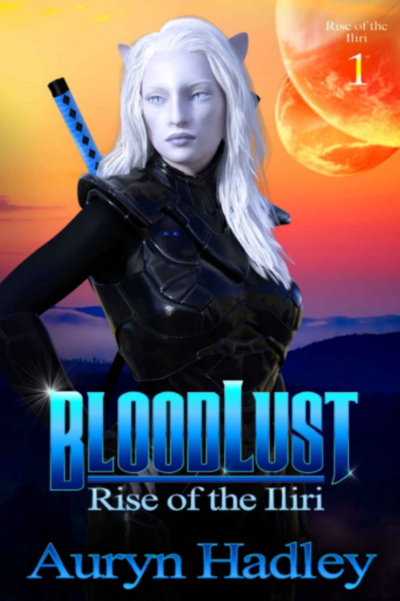 Three millennia previously, the Terrans landed on the planet of Ogun, and took it over. The native Iliri, though in many ways superior to the new arrivals in both mental and physical ability, ended up subjugated. They are now very definitely second-class citizens, only remembering vague legends of their once-proud past. One such is Salryc Luxx, a rare pure-bred Iliri who is a private in the army. Despite the fierce prejudice against “her kind”, she gets a try-out for the Black Blades, the military’s elite special forces. Which, it turns out, is a haven for Iliri and their supporters. Sal becomes the first woman in the unit, and her talents – including the ability to shape shift – quickly become an essential part of the team, allowing her to become one of their top covert assassins. However, her presence also causes significant static, not least her relationship with the Black Blades’ commanding officer, Blaec.
Three millennia previously, the Terrans landed on the planet of Ogun, and took it over. The native Iliri, though in many ways superior to the new arrivals in both mental and physical ability, ended up subjugated. They are now very definitely second-class citizens, only remembering vague legends of their once-proud past. One such is Salryc Luxx, a rare pure-bred Iliri who is a private in the army. Despite the fierce prejudice against “her kind”, she gets a try-out for the Black Blades, the military’s elite special forces. Which, it turns out, is a haven for Iliri and their supporters. Sal becomes the first woman in the unit, and her talents – including the ability to shape shift – quickly become an essential part of the team, allowing her to become one of their top covert assassins. However, her presence also causes significant static, not least her relationship with the Black Blades’ commanding officer, Blaec.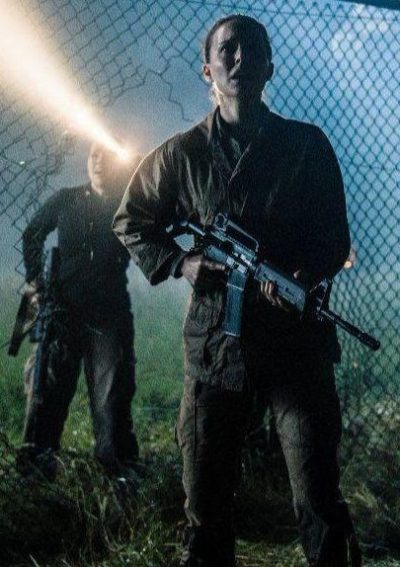 12 months after apparently vanishing while on a covert mission, the husband of former soldier Lena (Portman) suddenly shows up, unable to remember what happened, and suffering massive organ failure. The couple are quarantined by the government, and Lena learns of “Area X” in Florida. An apparent meteor strike has led to a “shimmer” which is gradually expanding in size: all expeditions into the area have vanished without trace, until Lena’s husband showed up. Lena joins another such expedition, led by Dr. Ventress (Leigh), hoping to reach the lighthouse which marks the apparent focus of the event, and discover something which can help her husband.
12 months after apparently vanishing while on a covert mission, the husband of former soldier Lena (Portman) suddenly shows up, unable to remember what happened, and suffering massive organ failure. The couple are quarantined by the government, and Lena learns of “Area X” in Florida. An apparent meteor strike has led to a “shimmer” which is gradually expanding in size: all expeditions into the area have vanished without trace, until Lena’s husband showed up. Lena joins another such expedition, led by Dr. Ventress (Leigh), hoping to reach the lighthouse which marks the apparent focus of the event, and discover something which can help her husband. I’m unsure who the woman is on the DVD sleeve. I can only presume it’s Lady Not-Appearing-In-This-Film. For what we have instead seems to be a real labour of love for British stunt-woman Cecily Fay. Though calling her a mere stunt-woman would be selling her short: she also wrote, directed, starred in, edited and scored this feature, plus did the fight choreography and sound re-recording, while sewing every sequin on the costumes herself. Okay, the last might be a bit of a stretch, but since she is also credited as the costume designer… perhaps not. Hell, even Robert Rodriguez doesn’t have such a large collection of hats, and this overwhelming multi-tasking might help explain why it took close to five years between the start of filming and its eventual release. The main problem is that Fay’s talents, while considerable, are not equally spread.
I’m unsure who the woman is on the DVD sleeve. I can only presume it’s Lady Not-Appearing-In-This-Film. For what we have instead seems to be a real labour of love for British stunt-woman Cecily Fay. Though calling her a mere stunt-woman would be selling her short: she also wrote, directed, starred in, edited and scored this feature, plus did the fight choreography and sound re-recording, while sewing every sequin on the costumes herself. Okay, the last might be a bit of a stretch, but since she is also credited as the costume designer… perhaps not. Hell, even Robert Rodriguez doesn’t have such a large collection of hats, and this overwhelming multi-tasking might help explain why it took close to five years between the start of filming and its eventual release. The main problem is that Fay’s talents, while considerable, are not equally spread.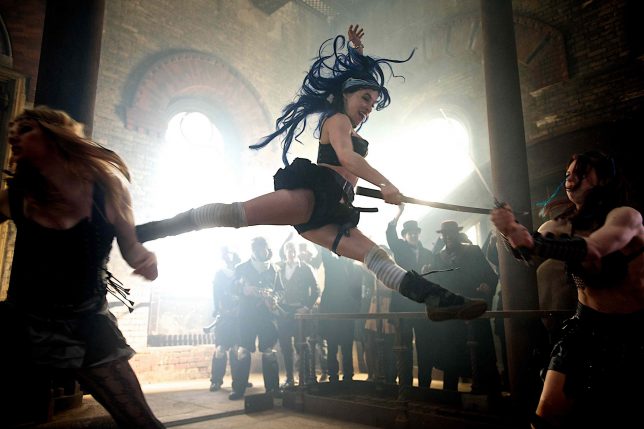 More positively, we have Fay’s acting and directorial talents. The former isn’t much of a surprise, as I enjoyed her performance in
More positively, we have Fay’s acting and directorial talents. The former isn’t much of a surprise, as I enjoyed her performance in  ★★★½
★★★½ Rarely, if ever, have I seen a film so thoroughly derailed by one bad decision. There’s potential here, and those involved have some decent track records as well. Director Lyde did the last two installments of the Mythica saga, including the best one,
Rarely, if ever, have I seen a film so thoroughly derailed by one bad decision. There’s potential here, and those involved have some decent track records as well. Director Lyde did the last two installments of the Mythica saga, including the best one, 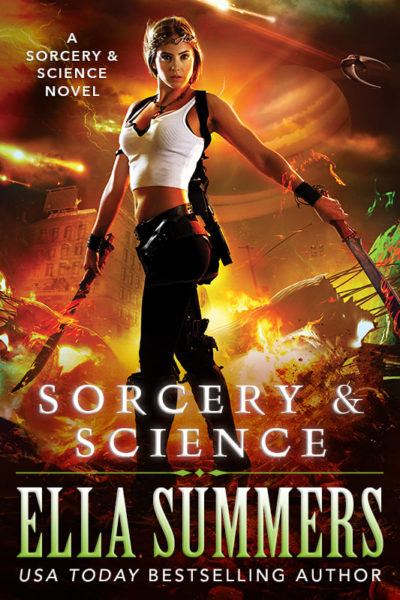 The blurb for this one reads, “Terra Cross is just your typical paranormal princess. She plays poker with goblins and leprechauns. She savors her morning muffin from the Pacific Sunrise Bakery in suburban California. She solves galactic crime cases. And on a particularly wild day, she can even see into the future.” It is somewhat inaccurate, at least as far as this novel goes. I don’t recall any poker at all, muffins appear once, and as for the crime-solving… Well, sorta but not really. There is, however, likely good reason, since the novel is a prequel to Summers’s “Sorcery and Science” series, in which I presume Terra does more of the above.
The blurb for this one reads, “Terra Cross is just your typical paranormal princess. She plays poker with goblins and leprechauns. She savors her morning muffin from the Pacific Sunrise Bakery in suburban California. She solves galactic crime cases. And on a particularly wild day, she can even see into the future.” It is somewhat inaccurate, at least as far as this novel goes. I don’t recall any poker at all, muffins appear once, and as for the crime-solving… Well, sorta but not really. There is, however, likely good reason, since the novel is a prequel to Summers’s “Sorcery and Science” series, in which I presume Terra does more of the above. As a joke I saw on Facebook went, “With all these self-driving cars, it won’t be long before there’s a country song about your truck leaving you.” The rise of smart vehicles is inevitable, and likely, so are other films like this, which falls somewhere between Christine and 2001. In this case, mother Sandra (Bowden) is driving to see her husband, whom she suspects of cheating on her, with their young child David (played by the two Hodges brothers, whom I’m assuming are twins!) in the back seat. Her car is the state-of-the-art Monolith, equipped with every safety feature imaginable, and then some. But a series of events – a diversion, an encounter with roadkill on the hoof, and Sandra giving David her smartphone as a distraction – lead to a tricky situation. She is stuck on a remote desert road, outside of a car that has now entered its impenetrable “vault mode”, with David trapped in its interior.
As a joke I saw on Facebook went, “With all these self-driving cars, it won’t be long before there’s a country song about your truck leaving you.” The rise of smart vehicles is inevitable, and likely, so are other films like this, which falls somewhere between Christine and 2001. In this case, mother Sandra (Bowden) is driving to see her husband, whom she suspects of cheating on her, with their young child David (played by the two Hodges brothers, whom I’m assuming are twins!) in the back seat. Her car is the state-of-the-art Monolith, equipped with every safety feature imaginable, and then some. But a series of events – a diversion, an encounter with roadkill on the hoof, and Sandra giving David her smartphone as a distraction – lead to a tricky situation. She is stuck on a remote desert road, outside of a car that has now entered its impenetrable “vault mode”, with David trapped in its interior.